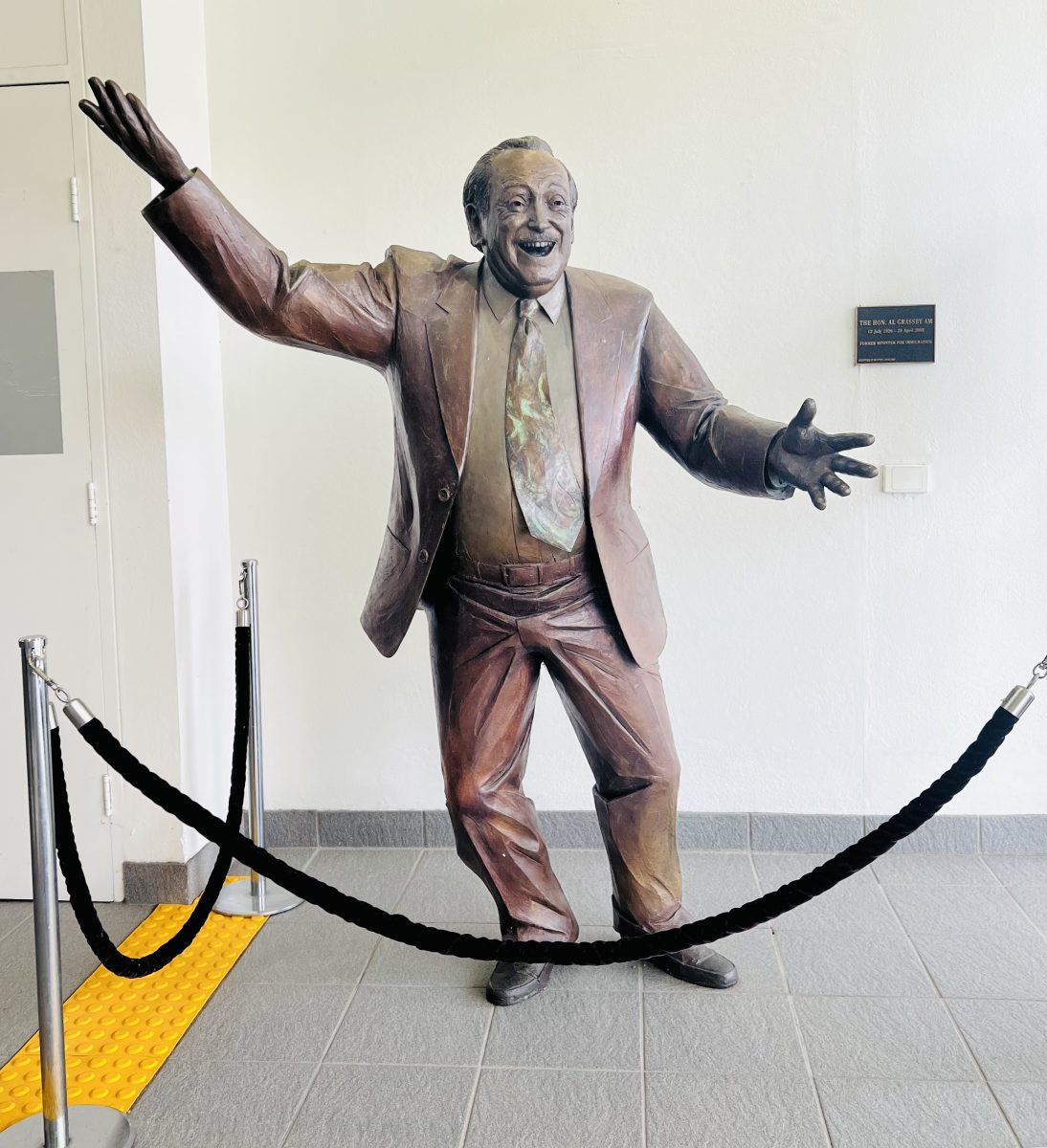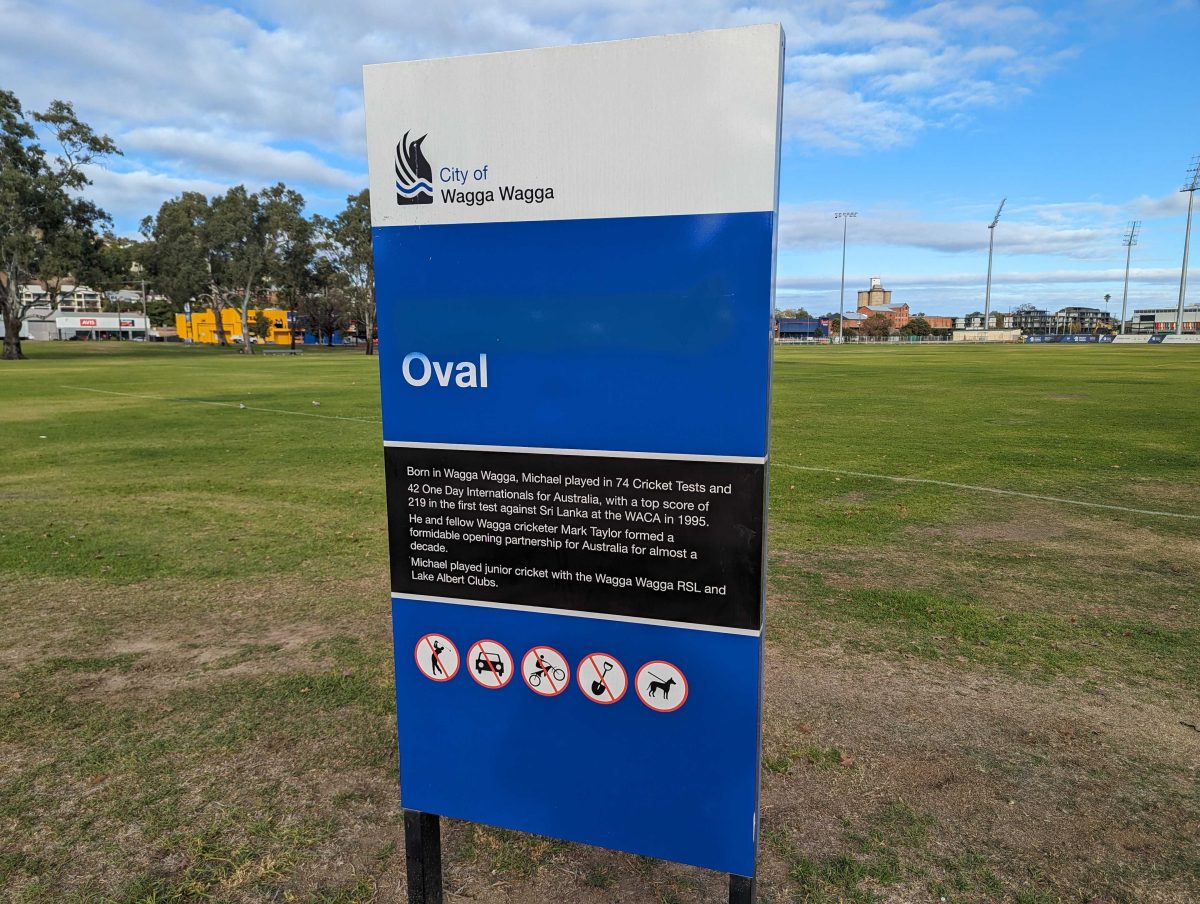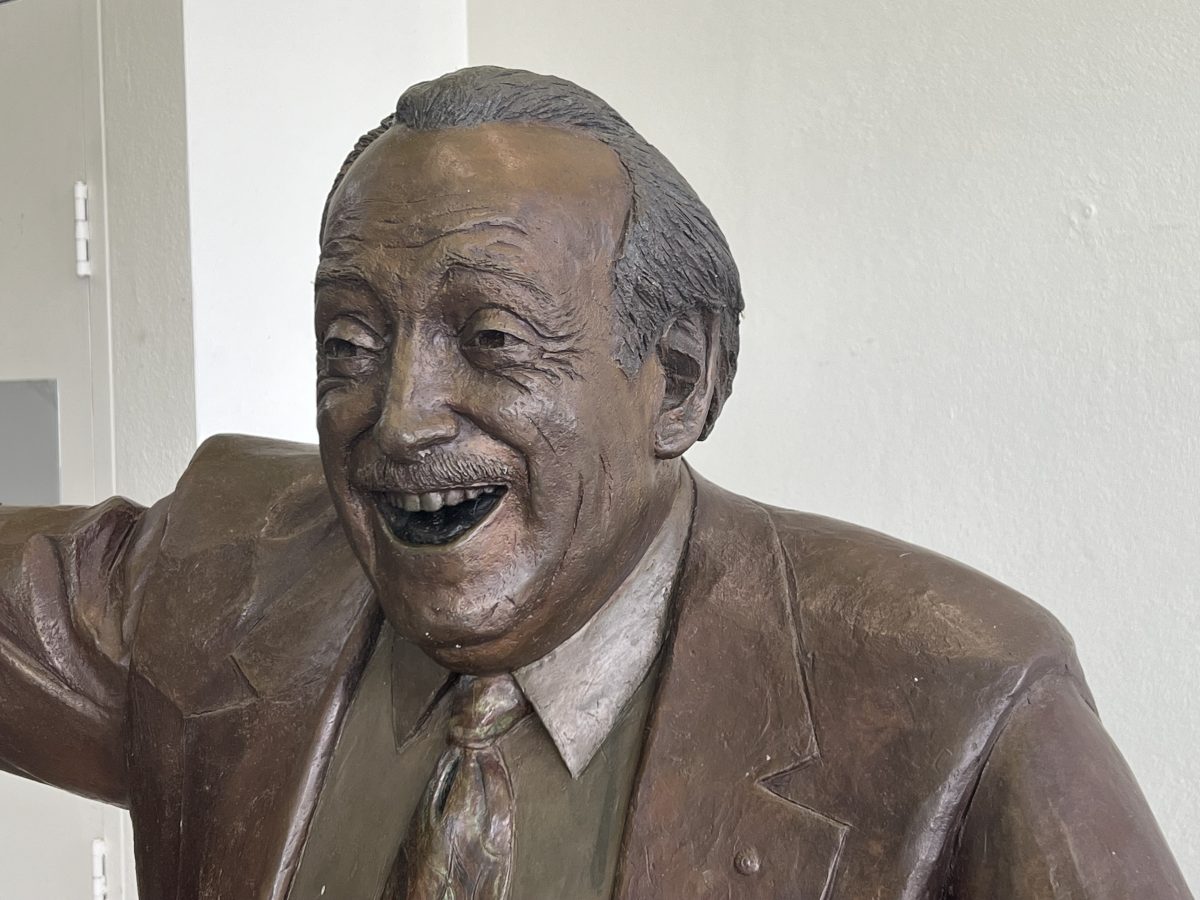
A bronze statue of controversial former Immigration Minister Al Grassby has been standing in the centre of Canberra for the past 17 years. Photo: John Coleman.
Wagga Council’s move to rename Michael Slater Oval is a well-intentioned mistake that sets a dangerous precedent.
The decision rewarded vandals, divided the community and did nothing to change bad behaviour.
A better approach would be to acknowledge both the achievements and flaws of our prominent figures, rather than trying to erase their history.
Slater was a swashbuckling opening batsman who represented his country in cricket between 1993 and 2001.
In 2014, his hometown’s council named an oval after him. Since then, he’s faced multiple controversies and was convicted of domestic violence charges in 2022.
In May 2024, vandals spray-painted over the Michael Slater sign to cover his name.
Wagga Deputy Mayor Jenny McKinnon posted a photo of the defaced sign on social media alongside the comment: “I’ve urged council to change the name of this oval as a matter of urgency. Glad to see that someone has taken some stealth action”. Later that month, the local government body voted in favour of a permanent change.

Wagga Wagga City Council stated they had no plans to remove graffiti from the Michael Slater Oval signage and then voted to permanently change the name. Photo: Jarryd Rowley.
To me, there’s a clear message. If you don’t like a public image, get your spray paint can out.
One wonders what would happen if someone chose to vandalise a statue of another controversial Riverina icon, former Immigration Minister Al Grassby.
In 2007, the ACT Government spent $72,000 of taxpayers’ money erecting a life-sized bronze image of Grassby in the foyer of the Theo Notaras Multicultural Centre, in the heart of town.
As a Canberra resident at the time, I applauded this decision. I learned about ‘Flash Al’ at school, and it was all positive. My history teacher said he was the father of multiculturalism who abolished the White Australia Policy, which paved the way for my Indian parents to migrate to Australia.
Since moving to Griffith, I learned about possible links Grassby had to the mafia and the alleged role he played in hindering a police investigation into the murder of his political opponent Don Mackay. (I’ve also found the White Australia Policy was probably abolished before he was elected, but that’s another issue).
Mr Mackay’s son James said the decision to erect it showed a lack of judgement. But the multicultural minister at the time championed the statue and it remains standing today.

Griffith politician Al Grassby is all smiles. Photo: John Coleman.
So which mementos to controversial historical figures should be kept and which must be erased?
Every decision to cull would inevitably divide communities along the predictable lines of age, gender, class and political affiliations.
In Wagga, all the female councillors voted in favour of changing the name of Michael Slater Oval, while most males opposed the move.
The majority ruled, but what exactly will the name change achieve?
Researchers have identified many factors that exacerbate family violence, including alcohol, stress, poverty, trauma and gender inequality. Oval signage isn’t on their list.
Instead of rubbing out landmark names and knocking down statues, why not let people know the full story of individuals being honoured?
The West Australians did this well with the Maitland Brown Memorial in Freemantle, a statue erected in 1913 which commemorated an 1860s expedition in which Indigenous people were killed. Some found the monument racist, but rather than rip it down, a plaque was added in 1994 stating the actions of white settlers “ended in the deaths of somewhere around 20 Aboriginal people”.
The Michael Stater Oval sign already includes a blurb detailing his highest score and cricketing resume. It wouldn’t be hard to add the line: “In 2022, he was convicted of domestic violence charges, which included using a carriage service to harass, stalk or intimidate a woman”.
Similarly, the Al Grassby statue could include a plaque outlining both his achievements and controversies.
This seems a better way to recognise problematic prominent figures – by expanding our historical knowledge rather than trying to erase it.
Original Article published by Oliver Jacques on Region Riverina.












